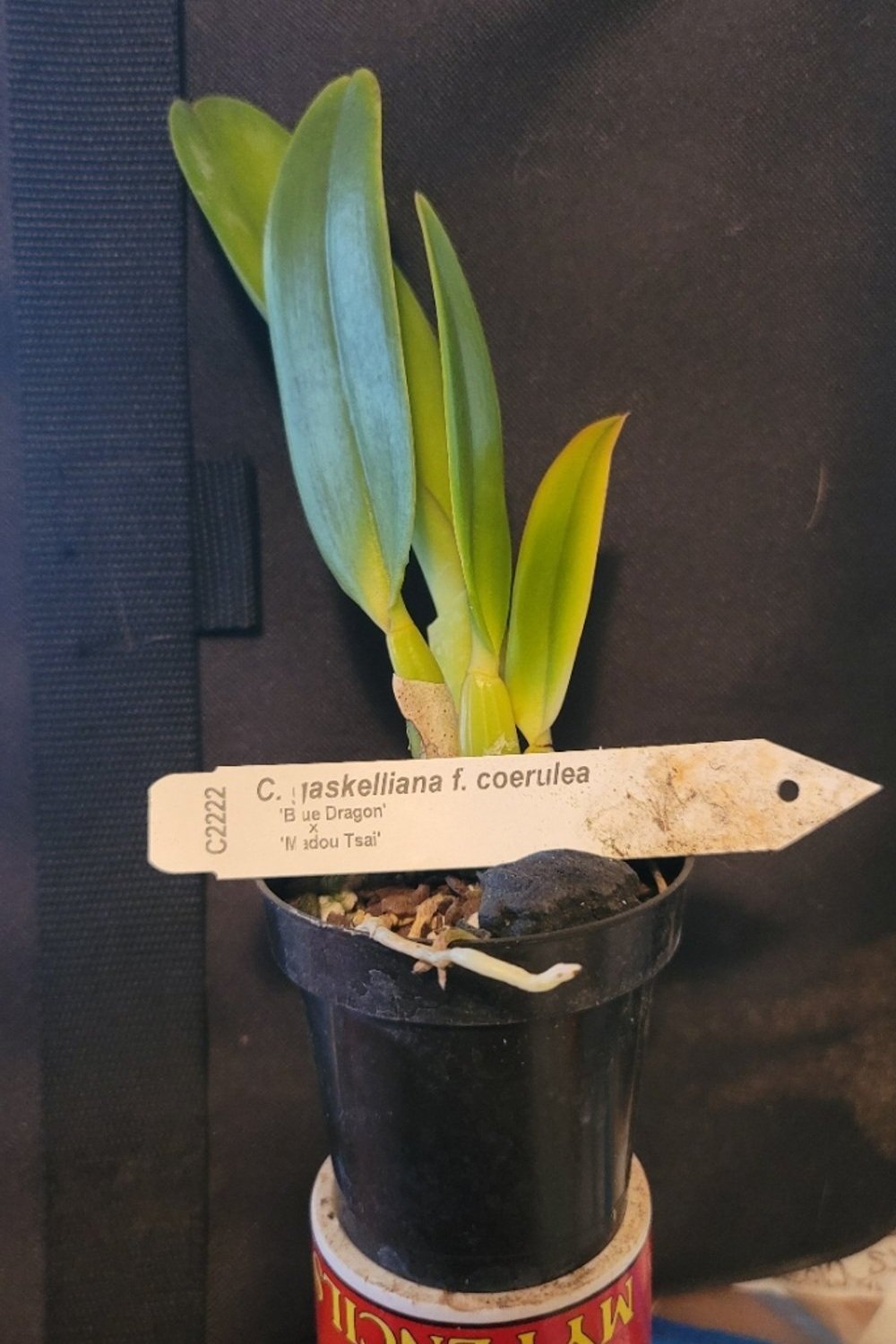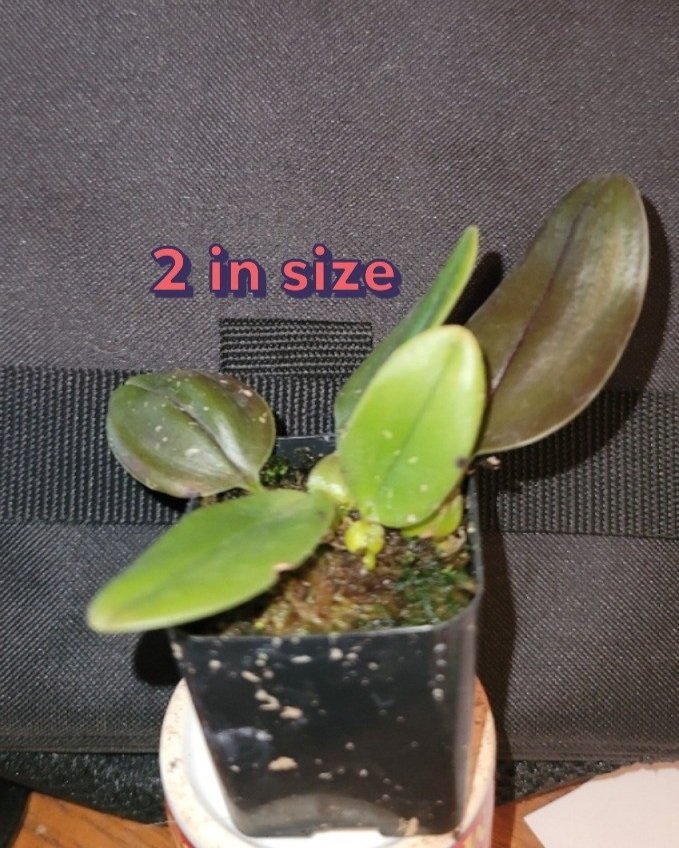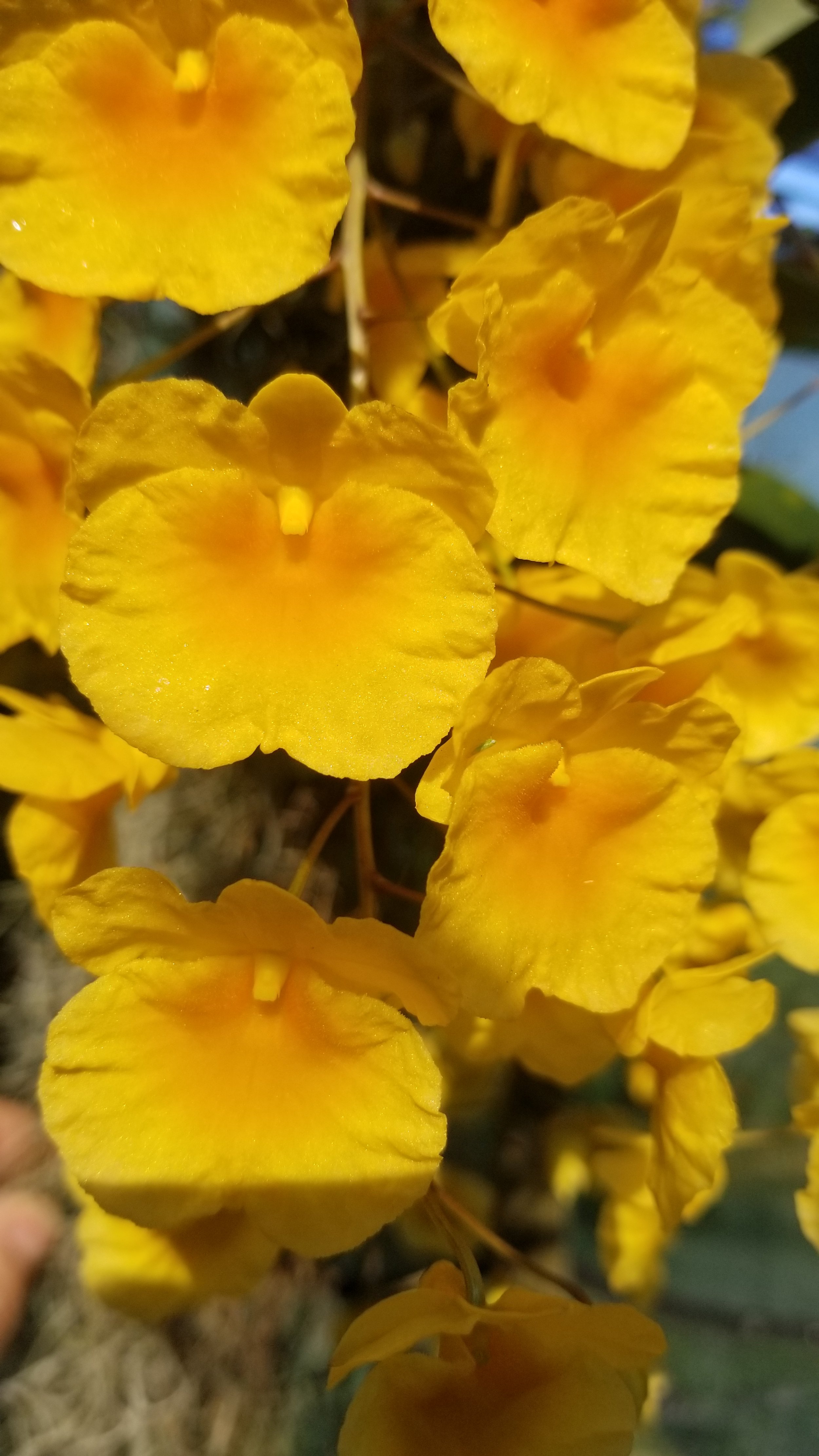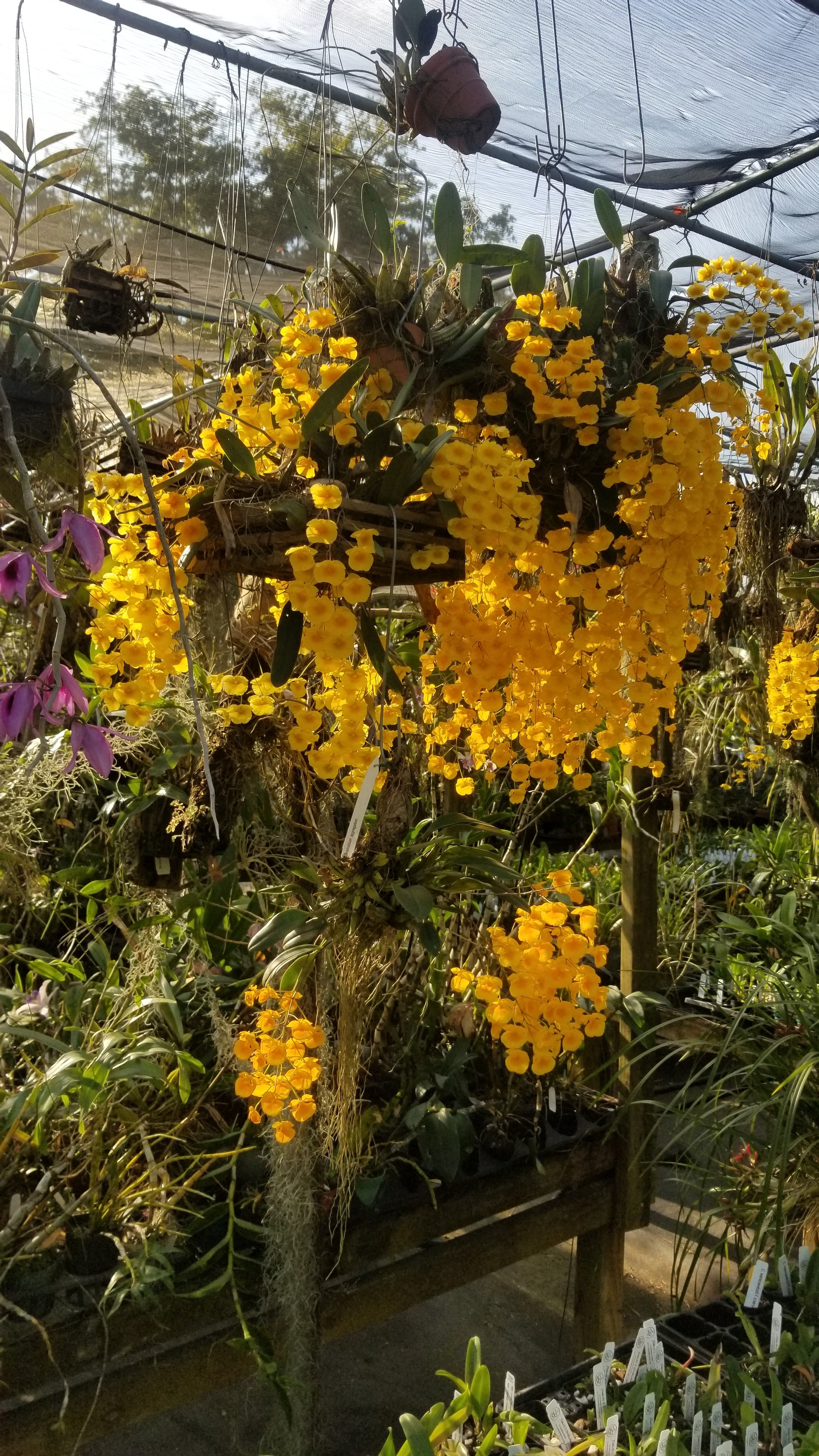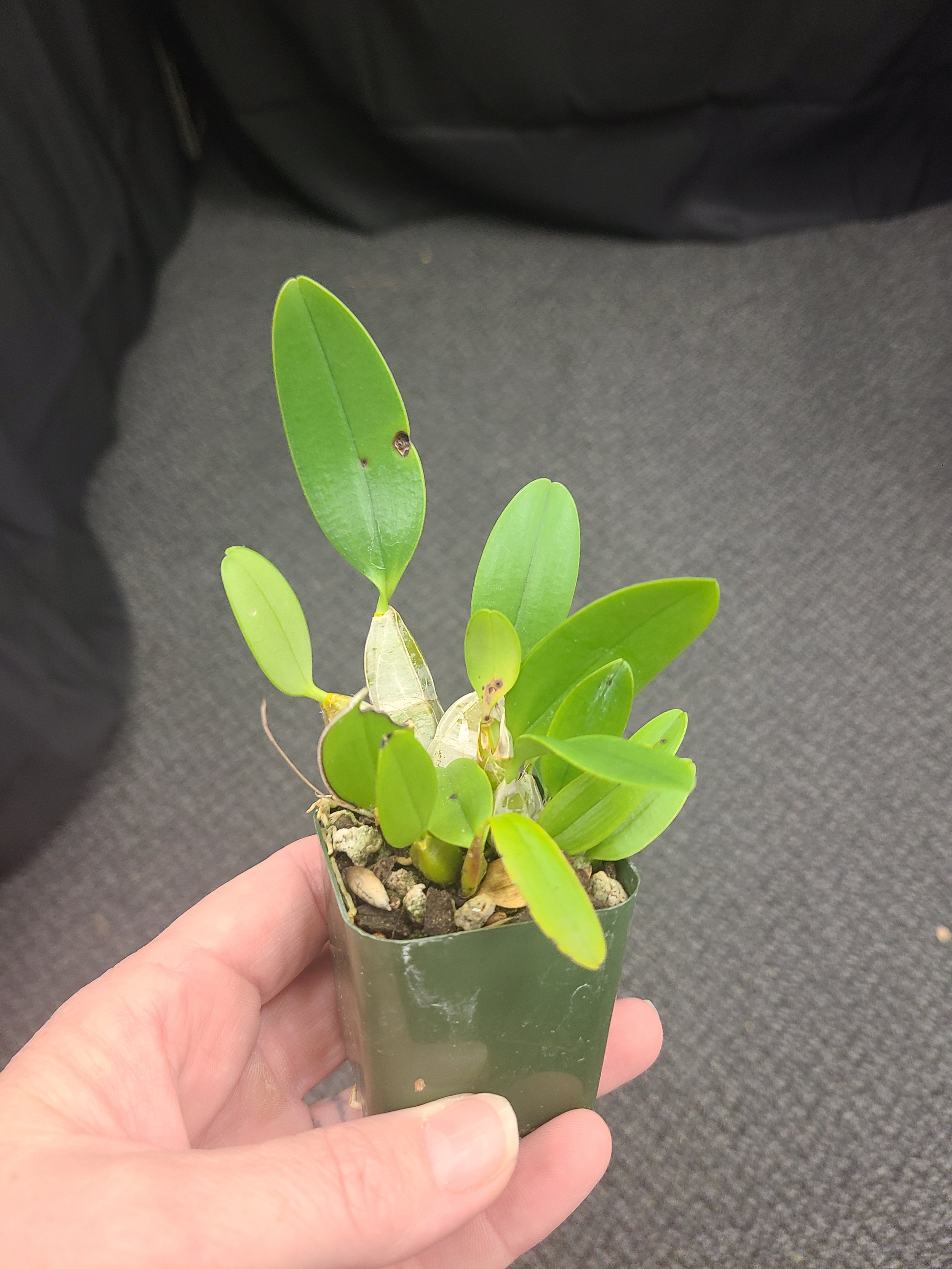Growing Conditions
Light: Bright, indirect light (2,500-3,500 foot-candles). Morning sun or filtered light is ideal; insufficient light delays blooming.
Temperature: Intermediate to warm, 60°F-85°F (15.5°C-29°C). Tolerates cooler nights (50°F/10°C) during winter rest.
Humidity: 50%-70%. Higher humidity supports growth, especially in summer.
Watering: Water when the medium (coarse bark or mounted) dries—weekly in summer, less in winter during dormancy. Avoid water in sheaths to prevent rot.
Fertilizer: Weekly 1/2 strength orchid fertilizer (e.g., 20-20-20) during growth (spring-summer), reduced in fall-winter.
Blooming
Season: Summer (June-August in the Northern Hemisphere), slightly later than spring-blooming relatives like C. mossiae.
Trigger: A dry rest in late winter/early spring (reduced watering after pseudobulbs mature) followed by increased light and water as new growths emerge.
Duration: Flowers last 2-4 weeks, longer in cooler, humid conditions.
Unique Traits
Blue Rarity: The coerulea form is exceptionally rare, offering a cool-toned contrast to the warm hues typical of Cattleya species. True blue is scarce in orchids, making this a collector’s treasure.
Fragrance: Retains the strong, pleasant scent of C. gaskelliana, a trait not always preserved in coerulea variants of other species.
Historical Value: C. gaskelliana contributed to early Cattleya breeding (e.g., C. Suzanne Hye), and f. coerulea adds a unique chapter to its legacy.
Care Tips
Potting: Use medium to coarse bark or mount on cork/wood for drainage and air exposure. Repot post-blooming when new roots appear.
Rest Period: Essential for flowering—reduce water in winter, resuming with spring growth.
Pests: Monitor for scale or spider mites, common Cattleya pests, though not unusually prone.


